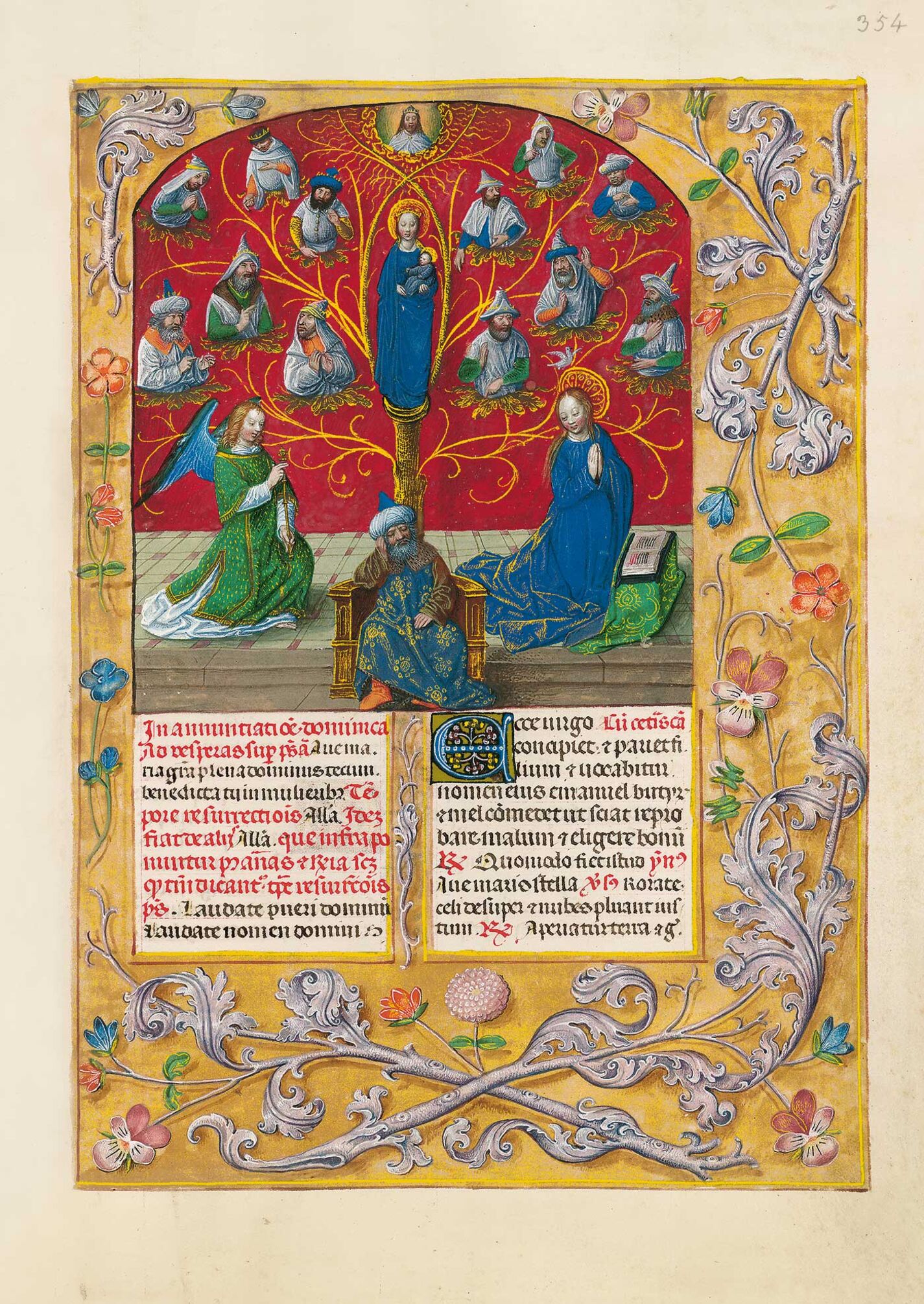The painting by the workshop of the Master of the Dresden Prayer Book that opens the Sunday of the Annunciation, is a typological image often assimilated to the Incarnation of Christ, who is shown between the Archangel Gabriel, on the left of the composition, and Our Lady, on the right, as per the model used since Carolingian times. The archangel is in liturgical garb and holds a sceptre crowned with a fleur de lys symbolising the union of God and man. He kneels on one knee and with his right hand makes a gesture of prayer borrowed from the philosophers of the ancient world. Opposite him, Our Lady with a blue tunic and cloak and the long hair fitting for a virgin, kneels with her hands together and eyes downcast to show her humility and bewilderment and turns slightly towards God’s messenger. Above her head is the Holy Ghost in the form of a dove. Next to her, as per Carolingian and Ottonian traditions is a prie-dieu with an open book upon it. A full-page painting can be seen on its recto folio, as usual in the paintings in the Flemish prayer books of that time. On the verso folio is a text, included in the psalter or in books of hours, referring to an Old Testament prophecy. The composition of both figures is like Giotto’s model in the triumphal arch in the Scrovegni chapel in Padua, which is in turn according to the text of
Meditatione Vitae Christi (chapter IV) by the Franciscan Johannes de Caulibus of San Gimignano.
The tree of Jesse, an image inspired by a passage from Isaiah (Is. 11:1), has been interpreted since the 3rd century as a reference to Jesse, David’s father – depicted in the painting in regal garb asleep on a throne with a tree sprouting from its back – and his descendents. The meaning is that the Messiah will come from the royal blood of David, whose ancestors are shown to the waist in kings’ garb emerging from corollas of flowers joined to the trunk by branches. The iconography of the ancestors of the Jewish monarch is of oriental and possibly Buddhist origin, with forerunners in Europe dating back to Hellenism, according to Vitruvius who referred to a decoration in poor taste consisting of “branches ending in flowers from which naked half-figures seem to emerge, some with human faces and others with animal heads”. Figures of this type appear in the margins of many manuscripts. At the top of the tree, emphasised by two branches interwoven to form a pointed arch, stands Our Lady with the Child in her arms as if she were a continuation of the trunk and Christ its flower. Jesus is depicted as the bust of a young man inside a clipeus, facing straight forward to indicate his omniscience and importance, a pose that originated in the images used for the official effigies of Roman emperors –
sacrae imagines – or consuls, a process that began towards the 7th century with certain iconographic models referring in general to the ideas of sovereignty, victory, power and justice.
The first model of the tree of Jesse appeared in the 11th century. The one in the
Isabella Breviary is of the Christological type and apparently based on the text of Rom. 15:12. It seems to have spread from its origins in the Isle of France throughout Europe.
The border around the painting consists basically of two pairs of branches of acanthus crossed diagonally with several flowers emerging from them against a gold ground.
